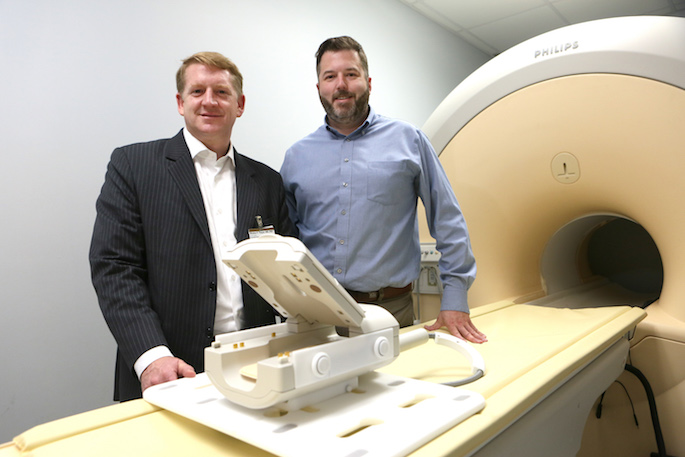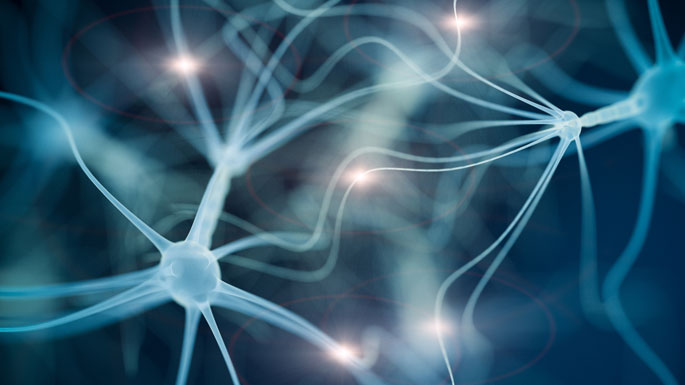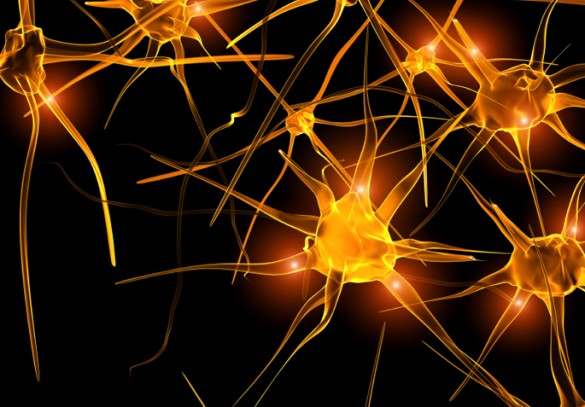
Surgeons have limited tools to successfully repair and track the recovery of peripheral nerves that have been severely damaged as a result of a traumatic injury, but Vanderbilt investigators hope to change this through research studies recently funded with more than $3 million in grants from the Department of Defense and the National Institutes of Health.
“The Department of Defense is excited about our research because nerve injuries, particularly in the Gulf War and Operation Iraqi Freedom, were one of the main problems affecting wounded soldiers,” said Wes Thayer, M.D., Ph.D., assistant professor of Plastic Surgery and Orthopaedic Surgery and Rehabilitation. “Now they wear body armor that keeps their core protected. Those who in prior conflicts would not have survived their injuries are now surviving, but they have more devastating extremity and orthopaedic injuries.
“That’s what this research is all about. We hope it will translate not only to help our wounded warriors, but also oncologic patients and our regular civilian trauma patients, and that it has other applications such as tissue transplantation,” Thayer said.
The peripheral nervous system is a network of 43 pairs of motor and sensory nerves that connect the brain and spinal cord (central nervous system) to the rest of the body. These nerves control sensation, movement and motor coordination. Surgery to repair peripheral nerves must be done quickly to minimize long-term damage and muscle atrophy.
“This is one of the biggest challenges facing reconstructive surgeries of the day,” Thayer said. “We can sever a blood vessel, sew it back together and make it work immediately, but we just do not have that ability with nerves. Once a nerve is cut and you repair it, it has to grow out from the repair site all the way out to its target.”
When nerves are surgically repaired, the repaired nerves must reconnect to or “innervate” a muscle, and their rate of growth is 1 millimeter per day. Recovery time varies depending on the area of the body damaged. For example, an arm injury where the nerve is damaged near the elbow can take a year to fully heal and restore sensation.
There has not been a technique to monitor the nerve’s recovery progress until it hits its target and sensation or muscle movement is regained, but in a new research study being conducted in the Vanderbilt University Institute of Imaging Science, biomedical engineers Richard Dortch, Ph.D., and Mark Does, Ph.D., will work with Thayer to develop new magnetic resonance imaging (MRI) technologies to track nerve recovery for patients with peripheral nerve injuries at the wrist.
“What we’ve been able to do in the animal model, and what we’re hoping to translate to the clinical model, is to track the nerve outgrowth after an injured nerve has been repaired to try to find out which patients have a successful repair and which ones don’t have a successful repair earlier in the course of their healing, so we can intervene earlier on if needed,” Thayer said.
An MRI technique known as diffusion tensor imaging (DTI) looks at the random motion of water molecules and how that motion is restricted in tissue. As nerves degenerate and regenerate, that restriction pattern changes, allowing the investigators to examine the tissue at a microstructural level, Dortch explained. The MRI/DTI images of the nerve are then combined to create a 3-D reconstruction of nerve fiber tracts. Images are taken in four sessions over a year’s time to track the progress of the nerve’s healing.
In a second research study that builds on a previous animal study at Vanderbilt, the group is collaborating with investigators at Johns Hopkins University on a clinical trial to determine if the application of a chemical to an injured nerve will help the damaged area fuse back together successfully.
“We have a technology where we put polyethylene glycol (PEG) on the nerve repair site,” said Thayer. “In our animal studies, for a percentage of the nerves, they actually fuse back together and start to work earlier. We’re very excited about this.”
The Department of Defense has also funded an additional two-year study using the MRI/DTI technology to assess outcomes after limb transplantation in conjunction with the PEG nerve fusion technique. This grant, also conducted in collaboration with Johns Hopkins, involves animal studies and extends this repair strategy to possible future application in limb transplantation.
“It takes a lot of different things coming together for this type of research to be possible,” said Does. “Some of the ideas that are being used here have been around for a long time, but you have to have the ideas, the right kind of equipment available and the right collaborators. It’s the nature of Vanderbilt.”
The collaborations at the heart of these studies are supported by The Vanderbilt Institute in Surgery and Engineering (VISE), an interdisciplinary, trans-institutional center created in 2011 to connect physicians with engineers and basic scientists to improve patient care.















